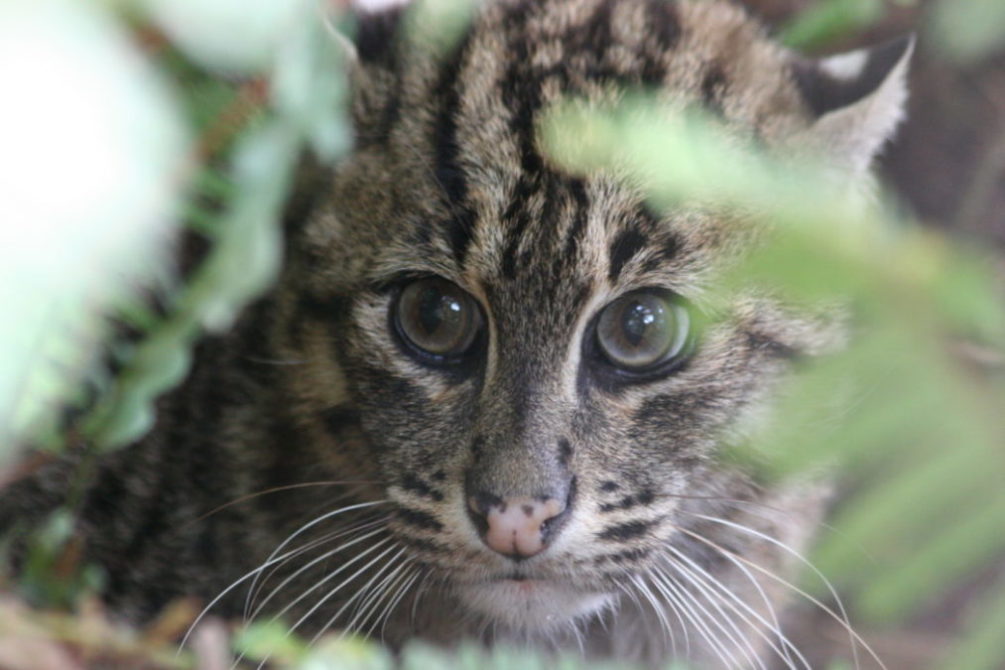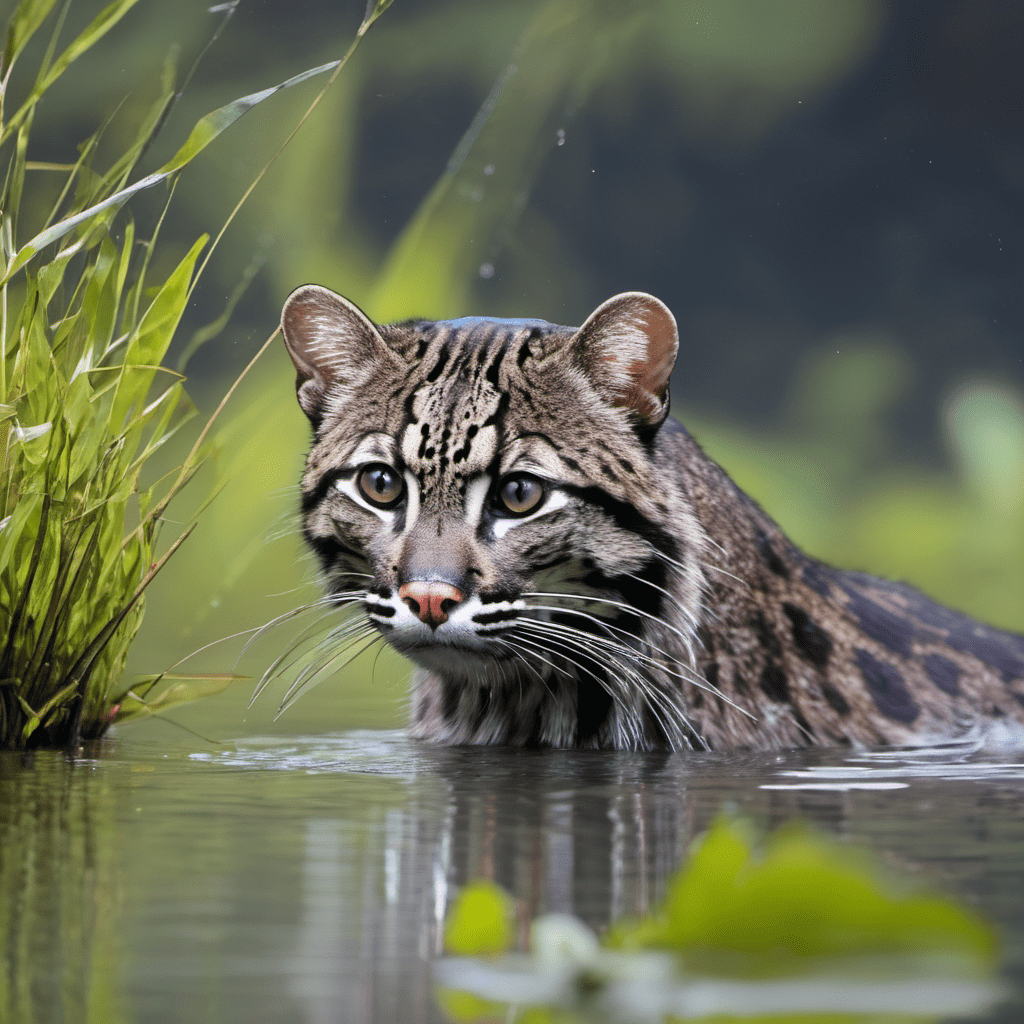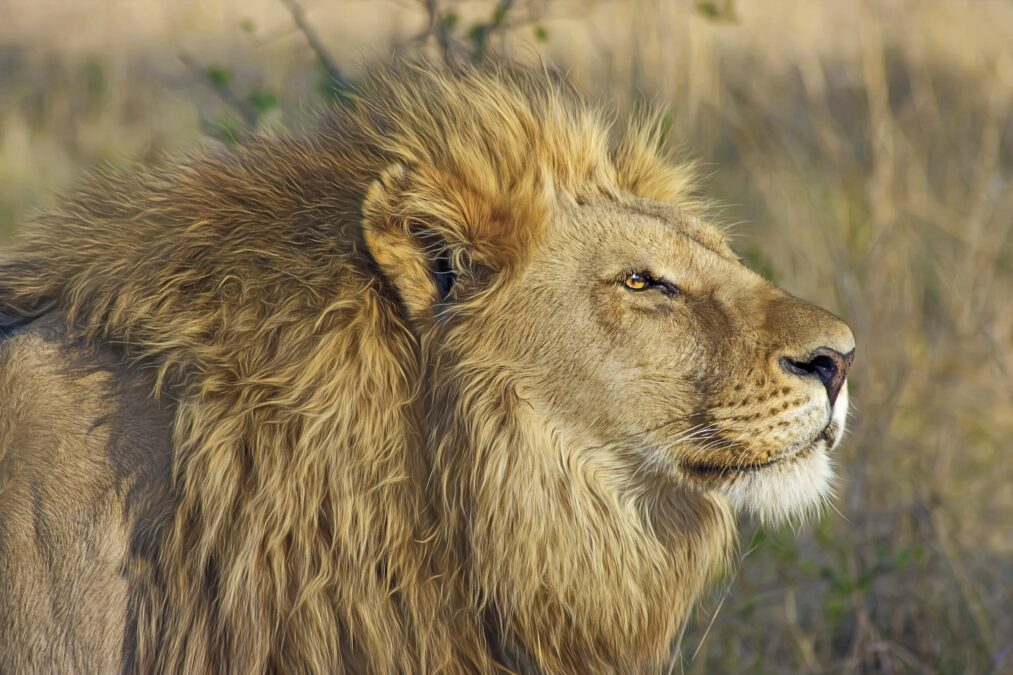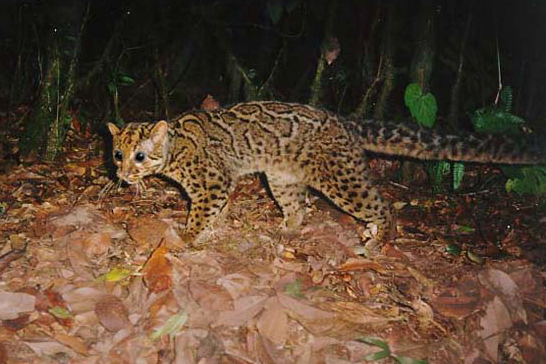Fishing Cat Facts
Fishing Cat
Common Name: Fishing Cat
Kingdom: Animalia
Phylum: Chordata (Vertebrata)
Class: Mammalia
Order: Carnivora
Family: Felidae
Genus: Felinae (Prionailurus)
Species: viverrinus

Misc.: This is yet another example of a cat that disproves the misconception that cats don’t like water. This cat received its Latin name from its civet-like appearance (the viverridae family) from Bennet (1833) who first described the Fishing Cat scientifically.
Size and Appearance: A stock and powerfully built cat, with short legs, a big broad head and a short tail. Fishing cats weigh between 13-26 pounds, stand 15-16 inches tall and reach lengths of 38-47 inches. Its coat is olive gray and is patterned with rows of parallel solid black spots, which often form stripes along the spine. Their ears are short and round with black backs, and prominent white spots in the middle. Despite the fishing habits of this cat, it shows very little morphological adaptations for capturing or eating fish. Like the Flat-headed cat, its claw sheaths are shortened so that the claws are not completely enveloped when retracted. Unlike the Flat-headed cat, in which the second upper pre-molar is long and sharp enabling it to grab slippery prey, the fishing cat has a much smaller and less developed tooth. At one time, one of the more noted characteristics often associated with the Fishing cat was webbed feet. Today, it is found that the webbing beneath the toes isn’t much more developed than that of a Bobcat.
Habitat: Found in a variety of watery habitats including mangrove swamps, marshy thickets, tidal creeks, oxbow lakes, and reed beds up to an elevation of 5000 feet.
Distribution: India through Indochina and Indonesia.
Reproduction and Offspring: After a gestation of 63 days, females produce a litter of 1-4 kittens, with the average being 2. They weigh 3.5-6 ounces at birth and will gain an average of 11 grams per day. Their eyes open by the 16th day, and meat is usually taken around the 53rd day. They are weaned between 4-6 months of age, reach adult size around 8-9 months old and are independent around 10 months.
In captivity, their average life span is 10-12 years.
Social System and Communication: Unknown. They are believed to be solitary, but there have been some unconfirmed reports
that the males may help with the care and supervision of the young.
Hunting and Diet: The bulk of this cats diet is made up of fish, which they will not only swim and dive after, but the try and scoop them out with their paws as well. It is also believed to take other aquatic prey such as crustaceans, mollusks, frogs and snakes. They will also prey on terrestrial mammals such as rodents, civets, young chital fawns, wild pigs, and even domestic animals such as goats, dogs, calves and poultry. They have also been known to scavenge off of tiger kills.
Principal Threats: Wetland destruction is the greatest threat facing the Fishing Cat. A survey showed that more than 50% of Asian wetlands are faced with moderate to high degrees of threat and disappearing. These threats include settlement, draining for agriculture, pollution, and excessive hunting, woodcutting and fishing. Download this 2008 report documenting 1,158 endangered and threatened exotic cats being illegally, yet openly sold in Myanmar markets. The Wild Cat Trade in Myanmar
Status: CITES: Appendix II. IUCN: Insufficiently known.
Felid TAG 2000 recommendation: Fishing cat (Prionailurus viverrinus). Although not endangered, this species’ lowland habitat is under stress. Fishing cats also have unique aquatic tendencies that add to their exhibitry and educational value. An international studbook exists. The target population is 100 individuals. The Fishing Cat now has a Species Survival Plan SSP.
How rare is this cat? The International Species Information Service lists 256 worldwide, with 68 being in the U.S.
Information reprinted With Permission from the IUCN Wild Cats Book
See Conservation Work Funded By Big Cat Rescue here:
All conservation insitu work: https://bigcatrescue.org/insitu/








Can they interbreed with domestic cats?
When wild cats are paired with domestic cats, many domestic cats are killed in the process because wild cats would rather eat domestic cats than mate with them.
ok?
A female in heat will stand for a tom, so it happens.